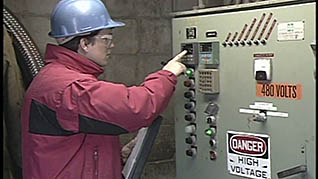Course Overview
A hidden danger can lurk in hazardous materials environments: electricity. Invisible and deadly, electricity released by arcs and sparks can ignite vapor and dust from hazardous materials. Improperly regulated electricity can cause high temperatures, triggering fires and explosions in a hazmat environment. This Video On Demand training helps hazmat workers stay safe around electrical power by explaining specific dangers associated with arcs, sparks and high temperatures and how to control those risks. It also explains the National Electric Code’s three classes of hazmat environments: Class I, Class II and Class III. This video makes it easy to understand what type of equipment should be used in which hazardous environments, and why work practices can make the difference between life and death when harnessing the power of electricity in proximity to hazardous materials. This video should be viewed by anyone working with or around hazardous materials and electricity.
Key Audience
Course Topics
Course Detail
Time
Languages
video format
captions
Resources
Lessons
Remediation
Bookmarking
Feedback
Microlearning



